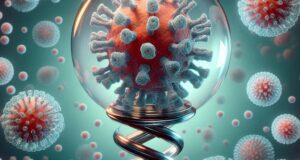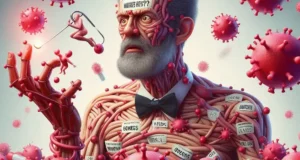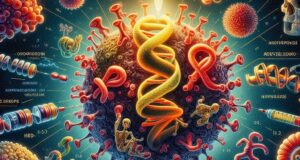Imagine a mother bird feeding her chick—a gesture of pure love, instinct, and care. Now imagine that, unknowingly, the mother’s beak carries a tiny drop of poison. The act of nurturing, meant to give life, now carries hidden danger. This is the tragedy and complexity of mother-to-child transmission—the process by which HIV can be passed from an infected mother to her baby during pregnancy, childbirth, or breastfeeding.

To understand this deeply human and heart-wrenching phenomenon, we must once again face a question that echoes through the decades: AIDS—where did it come from?
While the virus itself may have jumped from chimpanzees to humans in Central Africa in the early 20th century, its true spread—its human path—has often followed the most intimate and vulnerable routes. One of these is from mother to child, a heartbreaking irony in which the body that gives life may unintentionally pass on a virus that threatens it.
Let’s view this through a metaphor.
Think of a mother’s womb as a sacred garden—safe, warm, and nourishing. The child grows, drawing strength, blood, and nutrients from this life-giving source. But if HIV is present in the mother’s blood, the garden may carry invisible thorns. Later, through breastfeeding, HIV may enter again—carried within the milk meant to nurture.
Before the world understood this pathway, many children born to HIV-positive mothers were infected unknowingly. Hospitals didn’t screen early. Medication wasn’t widely available. Prevention was a hope, not a system.
And so we ask again: AIDS—where did it come from, and how did it reach the most innocent among us?
The spread of HIV from mother to child is not due to neglect or failure—often, it’s due to lack of access to medical care, antiretroviral therapy (ART), and early testing. In some regions of the world, especially in parts of Africa and South Asia, stigma, poverty, and misinformation further complicate the situation.
With proper care, medication, and support, the risk of HIV transmission from mother to baby can be reduced to less than 1%. Antiretroviral medicines taken during pregnancy, safe delivery practices, and alternative feeding options can all protect the child.
Healthcare providers now routinely test pregnant women for HIV, and those who test positive are immediately offered treatment to protect their unborn child. This global shift in awareness has helped dramatically reduce infant HIV infections, especially in countries with strong healthcare infrastructure.
Yet the battle isn’t over. In regions where access to treatment is limited, or where mothers are afraid to come forward due to social stigma, the virus still finds its way into cradles.

So when someone asks today, AIDS—where did it come from?, we must remember not just the distant forests of Africa or the headlines of the 1980s, but also the quiet hospital rooms, the young mothers, and the infants born into risk without choice.
Mother-to-child transmission is a reminder that HIV doesn’t only spread through reckless actions, but sometimes through the very moments of care and tenderness that define our humanity. And that is why compassion, education, and healthcare access are not luxuries—they are necessities in the global fight against HIV/AIDS.




